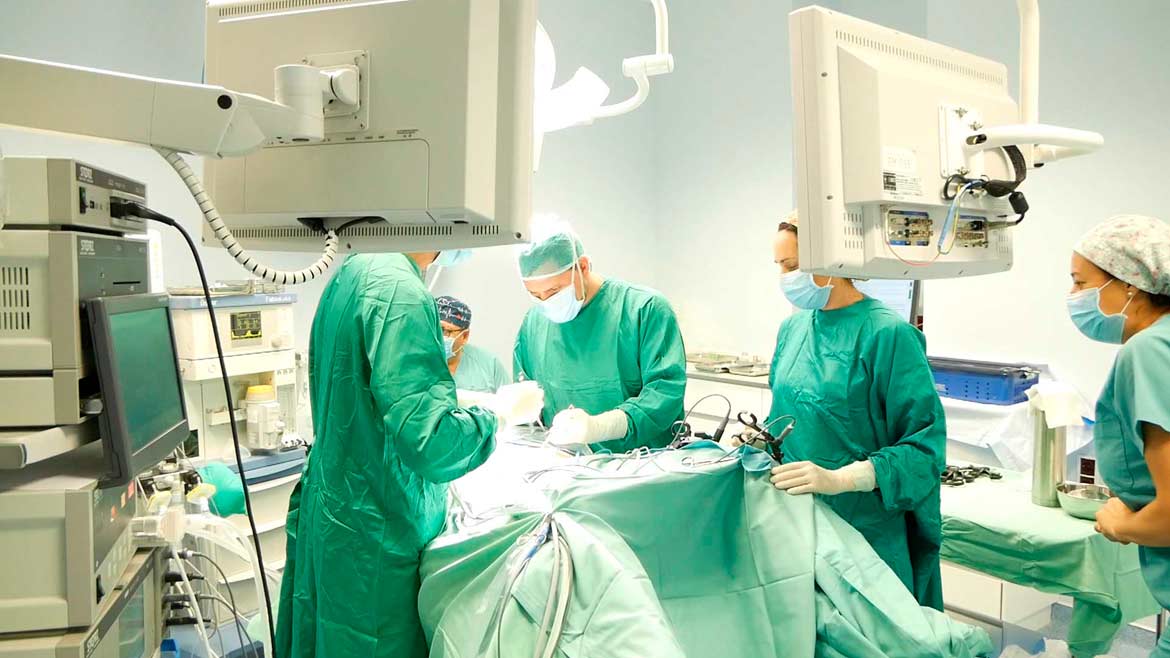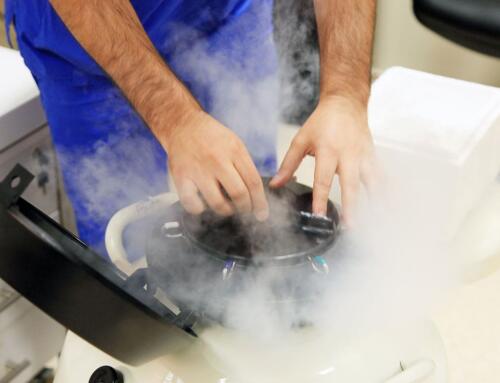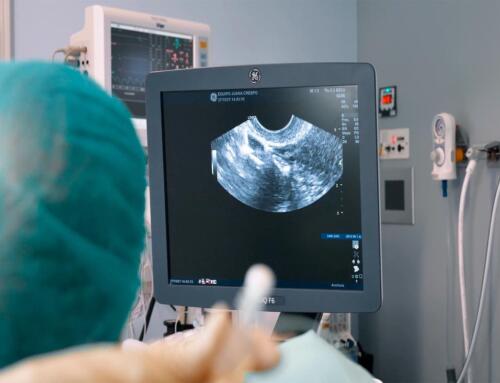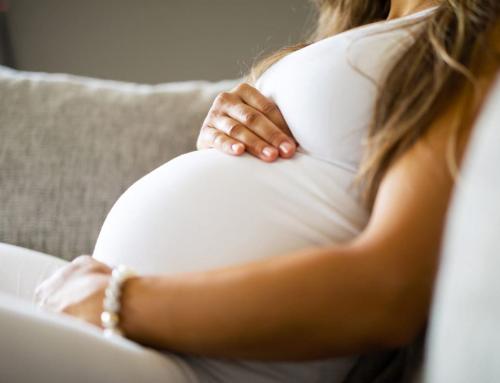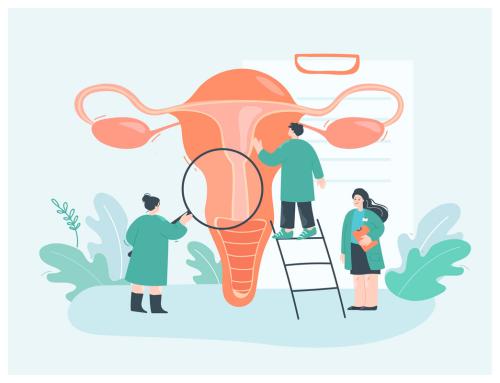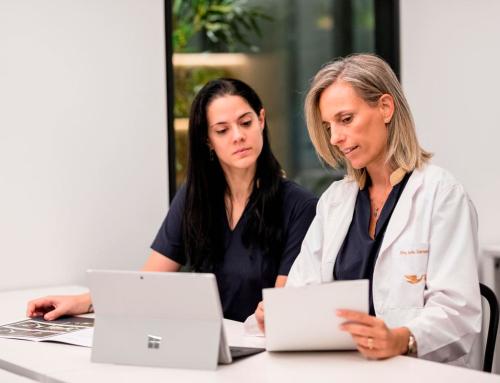Some gynecological alterations that prevent or hinder pregnancy, such as endometriosis or adhesions around the tubes and ovaries, often go unnoticed in physical examinations and diagnostic tests such as ultrasound or X-rays.
In these cases, laparoscopy is presented as an advanced technique for the search and correction of these and other problems, both in the abdomen and in the female reproductive system (uterus, fallopian tubes and ovaries).
What is laparoscopy and what does it do?
Laparoscopic surgery or laparoscopy is used to detect and treat many medical problems, including some of gynecological origin.
The minimally invasive technique consists of inserting a thin tube called a laparoscope through the abdomen and through a small incision in the navel. The laparoscope emits light and has a “mini-camera” that allows the medical team to make a more accurate diagnosis.
During the procedure, the abdomen is filled with gas (carbon dioxide) to increase its size, creating a sort of vault that allows visualization and more precise work on the pelvic reproductive organs. Previously, the patient must keep at least 8 hours of fasting.
When it is necessary to perform some type of surgical correction, in addition to the laparoscope, other instruments are used (forceps, scissors, coagulators, irrigators or aspirators) which are introduced through small incisions in the abdomen of between 5 and 10 mm.
Compared to traditional open surgeries, laparoscopy offers many advantages. The most important are:
- Faster recovery.
- Less pain or need for analgesia in the postoperative period.
- Much shorter hospital stay, including many of them on an outpatient basis (the patient goes home the same day).
- Lower rate of adhesions or intra-abdominal surgical sequelae due to less tissue injury during the procedure.
- The scars are smaller, practically imperceptible, and the esthetic results are positive.
- There is less chance of hemorrhage and blood loss during the intervention.
Laparoscopy and fertility
Laparoscopy applied to the field of fertility offers many diagnostic and therapeutic possibilities. Normally, the procedure can be performed on an outpatient basis and the patient is usually discharged a few hours later.
However, in some cases, patients require hospitalization for further monitoring and are discharged the following day.
-
Diagnostic Gynecologic Laparoscopy
Diagnostic laparoscopy is indicated when there is suspicion of endometriosis, ovarian bleeding and pain in the abdomen and pelvis of unknown origin. These pathologies can sometimes be associated with infertility, in addition to worsening the quality of life of many women.
-
Surgical gynecological laparoscopy
Currently, laparoscopy is considered a safe technique for most of the common gynecological alterations that can affect fertility, among them:
- Endometriosis. Laparoscopy allows us to remove the affected tissue and the sequelae of the disease in terms of adhesions and involvement of pelvic structures important for reproduction. Thanks to this technique, we can temporarily improve the inflammatory status of the pelvis and propose medical treatment to prevent or delay progression of the disease.
- Adhesions. Adhesions are abnormal tissues that generally form after surgery or infection, and that hinder the mobility and functionality of the tubes, causing obstructions in them. In most cases, adhesions can be removed laparoscopically. The technique not only increases fertility in some cases, but can also prevent new adhesions from forming.
- Fibroids/Myomas are tumors that form in the wall or outside the uterus. Sometimes they cause pain and heavy bleeding.
- Laparoscopy makes it possible, first of all, to detect the number of fibroids and to check their size and location. Depending on these factors, the technique makes it easier to remove them in a minimally invasive manner.
- Ovarian cysts. Ovarian cysts are small sacs filled with fluid or endometriotic content that form in the ovaries and can cause abdominal discomfort and alterations in ovarian function. Many of them disappear spontaneously, but when they do not, it may be advisable to remove them by laparoscopy mainly to have a diagnosis of certainty by studying the removed tissue. Even so, to remove very large cysts or fibroids, open surgery will be recommended.
- Ectopic pregnancy. Laparoscopy can also be used to remove tissue from the fallopian tubes of an ectopic pregnancy (a pregnancy that nests outside the uterus, in this case a tube), often requiring complete removal of the tube to solve the problem.
Laparoscopy in assisted reproductive techniques
Laparoscopy is also fundamental in the treatment of Hydrosalpinx, a pathology characterized by an obstruction in the distal part of the Fallopian tubes and by the accumulation of liquid in its interior, which negatively affects the implantation capacity of the embryos as well as conditioning the appearance of possible ectopic gestations.
This tubal pathology is associated with infertility, since it prevents the sperm from meeting the egg for fertilization.
In most cases, women with Hydrosalpinx need in vitro fertilization (IVF) treatment to achieve pregnancy.
Recovery and risks of gynecologic Laparoscopy
Recovery from laparoscopy is generally quick, and usually only painkillers are administered to reduce or control pain during the days following surgery (much less than in open or conventional surgery).
A laparoscopy must be done under general anesthesia. The patient will wake up in the recovery room and may feel somewhat “sleepy”. During the days following the procedure, she may feel tired and have some discomfort, especially in the area around the incisions in the abdomen and navel.
If the procedure is minor, it is usually possible to resume daily activities within 48-72 hours after the procedure.
Some warning signs that indicate a need to see a doctor for complications with laparoscopy are fever, severe pain, vaginal bleeding, redness or discharge in the area of the incisions and fainting.
On the other hand, and like any other intervention, laparoscopy can cause some complications, although they are usually minimal.
Some of the risks are:
- Injuries to the bowel, bladder or ureters (largely conditioned by the patient’s previous status, mainly in patients with previous surgeries that usually have many adhesions and distortion of the pelvic anatomy or advanced stages of endometriosis).
- Adverse reaction to anesthesia.
- Infection or hematomas at the entry sites of the surgical instruments.
- Abdominal inflammation.
Laparoscopy is a safe, useful and minimally invasive technique, and its diagnostic and/or surgical application can have many benefits for female fertility.


